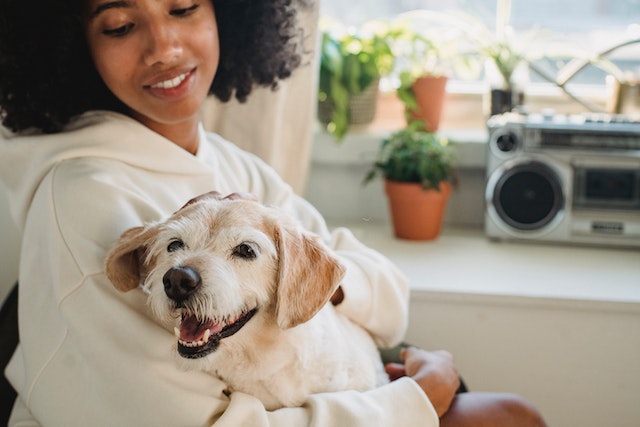Animal overpopulation is becoming a bigger and bigger problem, but there is hope. People willing to take on the responsibility of rescuing and fostering animals are bringing relief to the issue of overpopulation. According to the ASPCA, approximately six million companion animals enter animal shelters in the US annually, but around four million are adopted.
To manage the significant influx of household pets into animal shelters, drastic measures like pet euthanasia are sometimes employed to prevent overpopulation. The ASPCA lists that around 920,000 shelter animals are euthanized each year, though that number has declined since 2011 thanks to increased animal adoption.
In addition to animal overpopulation, animal abandonment is also a prevalent issue. It’s not uncommon for an animal to be abandoned in a home or establishment or left in harmful conditions. There are increasing numbers of stray animals in our communities, and each of these animals needs medical care and human affection. For anyone who has a heart for animals in this position, help is always needed.
This guide will provide all the information you need to rescue an animal, set up and introduce them to your home, and maintain care during your animal fostering term.
Is rescuing or fostering right for me?

If it’s that challenging, why would anyone want to commit to fostering animals? Here are a few reasons why rescuing and fostering animals is personally rewarding and an essential part of our society:
- Fostering animals helps with overpopulation.
- It prevents pests and diseases.
- Animal rescue is highly satisfying and rewarding to care for an animal who needs a home.
- You may increase the chances of the animal’s adoption, as it has been cared for in the interim of its rescue.
- Because fostering animals is temporary, it’s an excellent solution for people who love pets but can’t commit to long-term adoption.
- The animal may be a perfect fit for you, and you will want to keep it forever.
What should I consider before I decide to rescue or foster?
While rescuing and fostering animals is a very satisfying activity, it also takes a lot of time, work, and effort. Many people underestimate this when planning to take on a rescue pet, leading expectations to be inconsistent with the outcomes. Fostering animals starts with building trust and is maintained through routine, stability, and consistency. If the animal builds up trust in you, it’s less likely to have volatile or erratic behavior, such as guarding their food or barking in the house.
Emotional implications. While rescuing and fostering animals is a very satisfying activity, it also takes a lot of time, work, and effort. Many people underestimate this when planning to take on a rescue pet, leading expectations to be inconsistent with the outcomes. Fostering animals starts with building trust and is maintained through routine, stability, and consistency. If the animal builds up trust in you, it’s less likely to have volatile or erratic behavior, such as guarding their food or barking in the house.
Financial implications. Another consideration when fostering animals is the expense. Vet visits, medicine, and cleaning supplies are just a few things you’ll need to pay for, not to mention potential home modifications and increases to your insurance premiums. And speaking of insurance, it’s a good idea to consider insurance for pets to help pay for an unexpected accident or illness. You may be able to fund your activities through social media, crowdfunding, fundraising events, or community support.
Considering the potential expenses of fostering or rescuing multiple pets, it’s wise to explore more options for pet insurance. A comprehensive pet insurance policy can provide valuable coverage for unexpected accidents or illnesses, offering you peace of mind and ensuring your furry companions receive the best possible care. When insuring multiple pets, some providers offer multi-pet discounts, making it a cost-effective solution for responsible pet ownership.
Specialized care. Shelter animals might need to be treated for different things or require special care. Many pet care stores carry shampoos, flea and infection treatments, and other needs that require extra attention. Sometimes it could be simply spending more time with the dog or cat, especially if it has a sore paw and can’t walk very much. Remember that once in a while, you may need to dress wounds or nurture emotional wounds — like the animal’s insecurities or abandonment issues.
Sanitation and illness prevention. Cleaning when you have one or several animal rescues is especially intensive and necessary. If any of them are sick, have fleas or parasites, or have bladder control problems, it’s crucial to stay on top of your sanitation process. Once one animal becomes infected with fleas or parasites, other animals around it — or even people in the house — may also become infected. Tons of great animal cleaning supplies are safe for the environment and the inside of your home. Ensure that the animal’s hygiene is maintained and dog beds are cleaned regularly.
Fostering or rescuing at home step-by-step
When you consider fostering animals, especially if you’re going to perform the animal rescue yourself, there are essential things to consider and necessary steps to take before embarking on your mission.
- Is your home appropriate for animals? There are minimum space guidelines for keeping animals, especially dogs, at home. Refer to the USDA guidelines for exercise and floor space requirements for dogs. It’s a good idea to make sure that animals will have both indoor and outdoor space to run around, go potty, and spend their time while they’re with you.
- Can you legally keep animals in your home? Review your state, local, and building-specific guidelines for pets before you take on a foster or rescue. If you live in an apartment, you may be barred from keeping animals there. Some cities or counties may have rules that restrict animals that have been known to bite. Lastly, you may need to purchase a pet license for your animals.
- Do you have the right insurance to foster pets? Adopting animals, especially dogs, may introduce additional liability to you as a renter or homeowner. Unfortunately, many home insurance companies have rules that restrict which dog breeds you can have if you want to keep your policy with them. Call your insurance agent to discuss what policies they have about animal ownership and specific breeds.
Once you determine if you’re up for the job, you’ll want to start preparing a space for fostering animals.
Finding animals
This may not be a factor some people want to think about, but knowing the origin of the rescued animal is important and could be valuable to the vet. Several factors go into the animal’s well-being, and the more answers you can get, the better off you’ll be as its caregiver.
- Where was the animal found? For example, if it was found on the street, at animal shelters, or saved from a house with poor care, that information would be helpful in its treatment.
- Is there any information on the social history of the animal? Do you know if it lived with a family or other pets, was abused or abandoned?
- Has the animal had shots? Has it been fixed? Has it sustained any injuries?
- How would you describe the animal’s behavior and temperament? Does the animal get along with people, especially children and strangers?
- If the animal has been on the street, is there any way of knowing for how long? For example, are there homeowners, shopkeepers, or law enforcement officials who can give any information?
- If the animal was found at any animal shelters, how long has it been there, and what condition was it in upon its arrival?
- Is there any other information you can obtain about the animal?
During the rescue
Ensuring all these safety measures are in place will protect you and the animal from potential dangers. Because some animals are aggressive or in bad shape, prepare yourself for anything during a rescue. Follow these safety measures to keep you and any partners or friends safe:
- Protect yourself from any adverse reactions the animal might have by wearing thick clothing, long sleeves, pants, and gloves.
- Understand the animal may behave erratically, so you should anticipate any opportunities for it to run away or lash out.
- Do not attempt to enter a stranger’s property to take an animal from them, even if you feel the animal is being mistreated. Animal cruelty is a law enforcement concern, and you could put yourself or the animal in further danger if you try to intervene as an amateur.
It’s a good idea to bring a professional if the stray is on the street, as the behavior of a stray cat or dog could be unpredictable.
After the rescue
Once you get the animal home, it’s wise to separate it from other animals — especially until the stray has been taken to the vet and treated for any illness it may have. If one animal shows disease symptoms, it can quickly spread to other animals if they aren’t separated.
Be sure to also keep rescued animals from any stimuli that could potentially trigger bad behavior. Just because an animal seems calm doesn’t mean it isn’t reactive. This means avoiding exposure to children and all other animals. You’ll also want to feed the rescue animal away from you and any other pets, as it may resource-guard.
Transporting animals
Once you have safely rescued the animal or picked it up from your local animal shelter, you’ll need to transport it to your home. Remember that transportation is potentially costly, especially if traveling by air.
If you’re transporting an animal across state lines, research and follow any guidelines that may apply. For example, pets entering Washington state must have a health certificate from a licensed veterinarian before entering.
Here are some items to bring when transporting the rescue animal:
- Gloves
- Harness
- Lead
- Collar
- An appropriately-sized kennel
- If you travel by land, you’ll need the vehicle ready to go once you’ve rescued the animal. Make sure to secure the crate and items to make the trip less stressful for the animal.
- If you transport the animal by plane, review airline regulations while booking your flight. These include whether or not the airline can transport animals in crates or if they need to be sedated, as well as transportation to and from the airport.
- You may need to hire a professional animal transporter specializing in mobilizing rescue animals. This person is equipped to control the animal in public spaces and take care of necessary paperwork
Preparing yourself and your home
When you rescue the animals from animal shelters or elsewhere, preparing your home to host a happy pet is a good idea.
- Purchase supplies. This includes all the essentials like a sturdy collar and leash, quality dog food and treats, and any extras you want, such as a dog bed, chew toys, or a boundary gate.
- Time your adoption or fostering carefully. Make sure you get the animal when you are spending significant time at home (not when you plan a vacation or work overtime, for example). Take the time to introduce the animal to your home.
- Make a maintenance. Will you do all the walking, training, and feeding, or is there someone who will assist you? Is there anyone else in your household you need to discuss fostering animals with? Who will look after the animal while you’re at work or running errands? Will the animal be confined to a space in the home while you are gone? What will it need for the duration of your time away?
- Choose a vet. Your animal may need to see a vet, especially if you end up adopting or doing a long-term foster. Choosing a vet that is accepting new patients ahead of time can save you a headache later.
- Coordiante behavioral care if possible. You’ll also want to begin any behavioral care the pet may need as soon as possible. This includes obedience and leash training for dogs.
- Set up your home. Decide where you want the animal to sleep, eat, and play. Will it free roam the house or backyard, or will it have a designated area for its own space? Whatever you decide, ensure it’s set up so the pet will be comfortable.
- Get rid of any breakables. Scout the space for any potential hazards or anything you don’t want to be broken or chewed on. We recommend you keep the animal away from cords and wires, shoes, scrap food, or anything else a curious animal could get into.
Choosing the best space for your pet

Decide where you will house the pet; some people choose to confine the animal to a single space, especially while they get used to the new home.
Living room. Some people dedicate a single room, usually the living room, to the new animal in the house. This gives the animal a chance to get comfortable in one space rather than the entire house, and because the living room is a common place for people to spend time, it gives the animal a chance to get used to you and your family. If you choose to make the living room a dedicated space for your rescue animal, try to keep the area free from things that can break or that they can choke on.
Garage or shed. You may want to try the garage or a shed as an alternative to keeping the rescues in the garden or yard. If this is the case, make sure you have put the cleaning supplies out of reach along with anything else you don’t want them to get into. Further, the garage or shed might be where you keep more animals that can’t socialize with others due to something contagious. Remember that temperature control is critical to safe and healthy pets. Pets should be kept safe from extreme heat and cold. View the Humane Society pet temperature guidelines before choosing to keep pets outdoors.
Once you’ve chosen the best space for your pet, set up their bed, toys, and food and water bowls. This will help them learn their new routine with you, which is critical to good behavior and relationships. Be sure that they have a quiet space or corner in the room where they can go if they’re feeling overwhelmed or scared.
Once you’ve chosen the right space for your pet, be sure to follow these precautions to keep them safe:
- Keep garbage cans covered and toilet lids closed and latched
- Set up barriers to prevent the animal from entering any place in the house you don’t want it to enter.
- Make sure you don’t leave any food or drinks on ledges.
- Put away anything hazardous to the animal, such as medication, cleaning products, cosmetics, or poisonous plants.
- If you’re fostering an older animal, prepare your home for senior pets to keep it safe and comfortable.
- Make sure there’s a gate or fence in your yard to prevent the animal from leaving.
The adoption phase
Once the animals are healthy, evaluate them to see if they’re ready to go to a forever home. At this stage, you’ll be able to identify the type of people who can take on the dog or cat, depending on its needs or personality. For example, some rescue animals can’t be around other animals or children, while others don’t do well with stairs or small spaces.
If you’re fostering animals and intending to find them permanent homes, there are a few ways you can promote the adoption of your foster pet. For example, try recording the rescue and fostering process from start to finish. If potential adopters see the animal’s improvement from when it was first found to its adoption, people may be encouraged by its progress and thus be more willing to adopt the pet. If you record the process and post it on social media, you never know who may see it and want to give the pet a forever home.
Multiple benefits come with adopting a pet, like reducing your stress levels due to their company, they are the best emotional support, and many other proven benefits pets provide, but the biggest one of all will be knowing you gave a hopeless animal the opportunity of having a home after their rescue, plus rescue animals make the best pets!
Final thoughts
Fostering animals isn’t always easy, but the sense of satisfaction you’ll get from this noble endeavor far outweighs the difficulties involved. Not only will you see a potentially troubled animal turn into a loving friend, but you’ll also get to facilitate the adoption of your foster animal. It’s a beautiful reward to know you’ve made a difference in an animal’s life, and the quick tips in this guide will help set you up for success.
Author’s Note:
This article was created in collaboration with fellow animal lover Natalia Velez.




